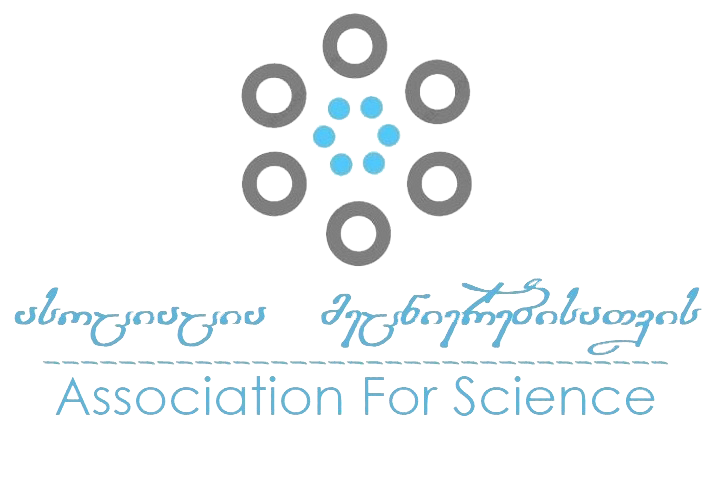The Issue of Georgian Migration to the North Caucasus in the Second Half of the 19th Century and the Beginning of the 20th Century (According to the Georgian Press)
DOI:
https://doi.org/10.52340/sou.2022.20.10Keywords:
Georgians, North Caucasus, Migration, XIX-XX Centuries, Georgian Press, National and Cultural IdentityAbstract
The migration of Georgians from Georgia is a less studied issue in Georgian historiography compared to other ethnic groups. The first Georgian settlements in the North Caucasus date back to the 18th century around the Caspian Sea and the river Tergi. From the 19th century, the emigration of Georgians became more active. In this process, a special role was assigned to the main transit and main road - Dariali valley, the same "Aragviskari", which was called "Military road of Georgia" since the 19th century. Consequently, a sizable and well-integrated diaspora of Georgians emerged in the North Caucasus by the second half of the 19th century.
The migration of Georgians to the North Caucasus took place mainly from the mountainous regions of Georgia - Mtiuleti, Khevi, Racha. It should be noted that not only migration of Georgians took place in the North Caucasus, but also occurred significant cases of Ossetians returning to Georgia during the 17th-18th and early 19th centuries. The mentioned process is intensively covered in the pages of the Georgian press: "Iveria", "Droeba", "Tsishni Shtshi", "Klede", "Ganatleba", etc. Sh. In addition to the press, information is available in antiquities and private funds of Georgia, including the fund of the Society for Spreading Literacy among Georgians. In the present article, the issue of migration of Georgians to the North Caucasus in the second half of the 19th century and the beginning of the 20th century is studied according to the Georgian press of the turn of the 19th-20th centuries.
Utilizing historical comparativism and content analysis, the paper compares the data available in the Georgian press at the turn of the 19th-20th centuries, explores the reasons for migration of Georgians, the economic and cultural activities of the Georgians living in the North Caucasus, their successes and the struggle to preserve the national identity. On the basis of the research, the conclusions were drawn that by preserving their native language and traditional culture, Georgians firmly preserved their national identity, which was facilitated by the continuous contact of North Caucasian Georgians with their native regions, the Georgian schools and the Georgian church founded by them, thus preserving the elements of spiritual culture, firmly protecting the most important features of the national-cultural identity: the Georgian language, writing, literature, traditional existence, Georgian-language theatrical performances, etc. The cultural movement of Georgians migrating to the North Caucasus gave powerful impulses to the cultural and educational life of the local population.
References
ანჩაბაძე და სხვები, 1978: ანჩაბაძე ზ., ბოცვაძე თ., თოგოშვილი გ., ცინცაძე მ., ჩრდილო კავკასიის ხალხთა ისტორიის ნარკვევები, ნაკვეთი II, ივანე ჯავახიშვილის სახელობის ისტორიის, არქეოლოგიისა და ეთნოლოგიის ინსტიტუტი, გამომცემლობა „მეცნიერება“, თბილისი;
ბურჯანაძე, 1912: ბურჯანაძე, ვ., ალაგირელ ქართველთა კულტურული ნაბიჯი (წერილი ჩრდილო კავკასიიდან) ,,განათლება“, სამეცნიერო-პედაგოგიური და სალიტერატურო ჟურნალი, 1912წ.1 იან., N1-10. გვ. 52- 60.
გვასალია, 1990: გვასალია ჯ. ქართველი და ოსი ხალხების ურთიერთობის საკითხისათვის, „მაცნე“ ისტორიის ... სერია, N3; თბილისი;
მიწერ-მოწერა, კავკავის განყოფილებასთან, 1908 – 1915: მიწერ-მოწერა ქართველთა შორის წერა-კითხვის გამავრცელებელი საზოგადოების კავკავის განყოფილებასთან, მოხსენებები და ოქმები განყოფილების საქმიანობის შესახებ | 1908-1915, https://prosopography.iliauni.edu.ge/s¬ou-rces/3689-mitser-motsera-qartvelta-shoris-tsera-kitkhvis-gamavrtselebeli-sazogadoebis-kavkavis-ganyofile¬bastan-mokhsenebebi-da-oqmebi-ganyofilebis-saqmianobis-shesakheb-1908-1915
პროსოპოგრაფია, 1918-1921: საქართველოს პროსოპოგრაფია (საქართველოს პირველი რესპუბლიკის (1918-1921) პროსოგრაფიული ბაზა და სოციალური კლასტერების ანალიზი https://prosopography.iliauni.edu.-ge/places/875-alagiri
ღუდუშაური, 1984: ღუდუშაური გ., ქართველი და ჩრდილოკავკასიელი ხალხების კულტურული ურთიერთობის ისტორიიდან (ცნობები ჩრდილო-კავკასიელი ხალხების შესახებ XIX ს-ის რეფორმამდელი ხანის ქართ-ველ მოღვაწეთა ნაწერებსა და პრესაში), საქართველოს სსრ მეცნიერებათა აკადემიის მაცნე, ისტორიის …სერია, 1984, N2.
პრესა:
დროება, 1883 #28,
ივერია, 1888 #135
ივერია, 1894 #132
ივერია, 1899, #241
ივერია, 1903, #72
ივერია, 1903 #170
ივერია, 1903 წ. #206
კვალი, 1900 წლის #26
კლდე, 1920, #18,
ცნობის ფურცელი, 1896, #46
ცნობის ფურცელი, 1896 #67
ცნობის ფურცელი, 1897 #218
ცნობის ფურცელი, 1898 #665
ცნობის ფურცელი, 1901 #1619
ცნობის ფურცელი, 1901, #1643
ცნობის ფურცელი, 1902 #1706
ცნობის ფურცელი, 1903 #2203



